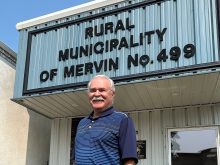Glacier FarmMedia – For Jim Goodman, some agricultural industries are romanticized and don’t always show the reality.
Goodman is a retired dairy farmer from southwestern Wisconsin and president of the National Family Farm Coalition (NFFC), a U.S.-based sister organization to the National Farmers Union in Canada.
He hopes the proposed Milk from Family Dairies Act that his organization has crafted will come to fruition, returning the industry to its roots and mirroring principles such as those on which Canada’s supply management system is based.
Read Also

Europe holds promise for Canadian lentils
Pulse Canada is trying to help boost lentil consumption in Europe, which is already the fourth largest market.
“From the time I was a kid, most farms milked maybe 20 cows. When I farmed with my brother for years, we milked about 45, but that’s not the case anymore,” said Goodman, who farmed for 40 years.
“The average herd, I hear, in Wisconsin is pushing close to 200. Of course, we have quite a few 1,000, 2,000, 3,000-cow dairies, and some want to expand into the 10,000 range. So it’s a real different world out there.”
Loss of dairy farms
The NFFC says fewer than 25,000 dairy farms remain in the United States, a 95 per cent loss of farms since the 1970s when 648,000 family-scale dairies were in operation.
Since 2017, the U.S. has seen a 40 per cent decline of dairy farms.
As production becomes more consolidated in corporate farms, Goodman acknowledges it is an uphill battle to reverse the trend.
“We always hope for a farm bill that has some good dairy policy, and that’s not really happened,” he said.
“As far as turning things around and going back to more small dairies, in the States, we may have gone so far that might not be able to happen. It’s not just that the farms have got bigger, but the small processors are pretty much gone, too. So in a lot of places, it’s really hard to even get your milk picked up if you don’t have enough volume.”
National Family Farm Coalition
NFFC is an alliance of 30 grassroots farmer and advocate-led groups across the U.S. representing the rights and interests of more than 100,000 independent family farmers, ranchers and fishermen.
Goodman hopes the Milk from Family Dairies Act will hark back to the days of the New Deal era for most commodities to ensure adequate food supplies domestically while getting fair prices for U.S. producers.
He said supply management helps achieve that as a floor for smaller producers.
“You guys have a system set up where you produce what you need and adjust it yearly, and that kind of makes sense,” he said about Canadian supply management.
Support for supply management
“I would really like Canadian farmers to know that the Family Farm Coalition and many other farm groups really support your ability to keep your supply management.… Canada has just not been a big market for our dairy products. I have no desire to crash your system. Wisconsin produces more milk than all of Canada. If we did get rid of your supply management and started shipping milk, in a few years, your market would still be flooded, and we wouldn’t be any better off, nor would you.”
The proponents of the proposed act face a daunting task pursuading someone in Congress to sponsor the bill and get co-sponsors.
“We’ve got people that are willing to co-sponsor, but nobody wants to put their name on the top of the list, for whatever reason. Once you get that done, then it’s called a marker bill that would go in as part of the farm bill,” said Goodman.
“There’s a lot of opposition to it, mostly from the dairy industry, for one, because they wanted a lot of cheap milk, and because the government helps them export it. They have programs that basically subsidize their lower costs if they export it or wherever it might go.”
There are also efforts to find non-food uses for milk such as fertilizer and plastics, but Goodman isn’t convinced.
“That’s one of the things they’re talking about, which doesn’t make a lot of sense. It’s kind of like ethanol. The amount of energy put in is probably less than the amount of energy you get back out of it. So you’re losing ground by doing things like that.“
Changing the mindset of consumers
If something such as the Milk from Family Dairies Act were to pass, Goodman said a foundational mindset change would be required of consumers.
“When you buy milk, the carton usually has a picture of cows out on pasture, or if it’s eggs, it’s chickens running around in the grass, and that’s not the way it’s done. But that’s what people want. That’s what the consumers believe they’re buying,” said Goodman.
He said states that have a lot of big dairies, such as Wisconsin, cannot responsibly get rid of all the manure because there is not enough farmland close enough to the farms, causing a pollution problem.
For example, Goodman said a county in northeastern Wisconsin had high percentage of wells testing positive for E-coli.
“I’ve seen videos of people turning their faucet on and the water runs out brown. So you know, things like that. The fact that we just keep planting more and more corn and soybeans and doing it on land that should be used for pasture, which would make for smaller farms, grass-based, more local production. I think those are the angles we have to use,” said Goodman.
Corn and soybeans feature heavily in Wisconsin’s agriculture industry, with nearly six million acres planted annually, according to Wisconsin Ag Connection, with the crop supplying feed for dairy cows.
However, Goodman said the production comes at U.S. taxpayer expense, flowing to a relatively small number of large farms.
“The actual price the farmer gets paid for it isn’t enough to do it, so the difference has to be made up by taxpayer subsidies. That’s really not a sustainable system, either,” he said .
“Milk is produced in Wisconsin, and then it is separated and the cream might get shipped somewhere else. The same milk might get produced in Florida and the cream sent north. It’s just so bad environmentally in so many ways, not just from all the manure and from all the corn and soybeans that would have to be grown to feed these cattle, but from all the transportation and shipping. Every part of this industrial ag equation is wrong. I would really like Canadian farmers to know that the Family Farm Coalition and many other farm groups really support your ability to keep your supply management.”















